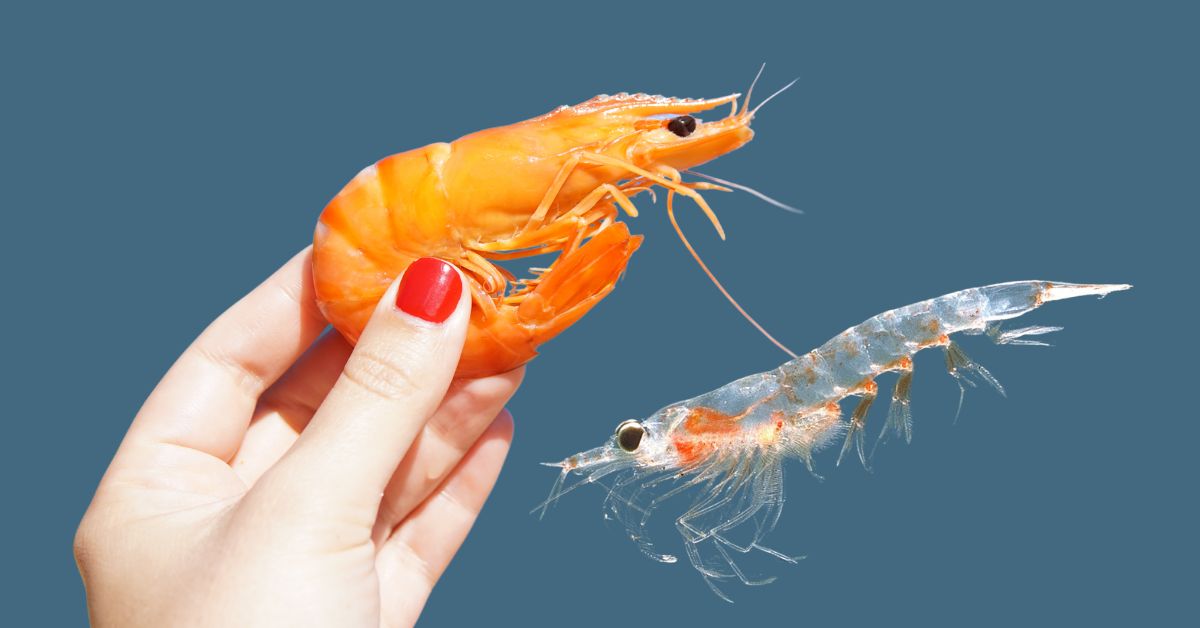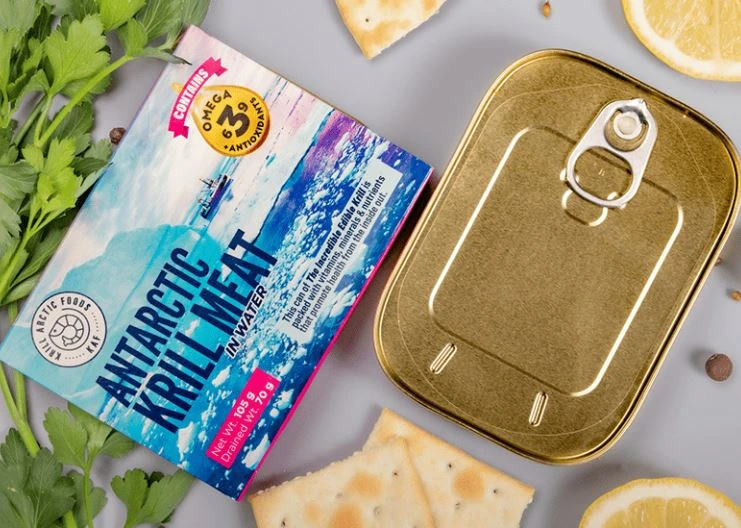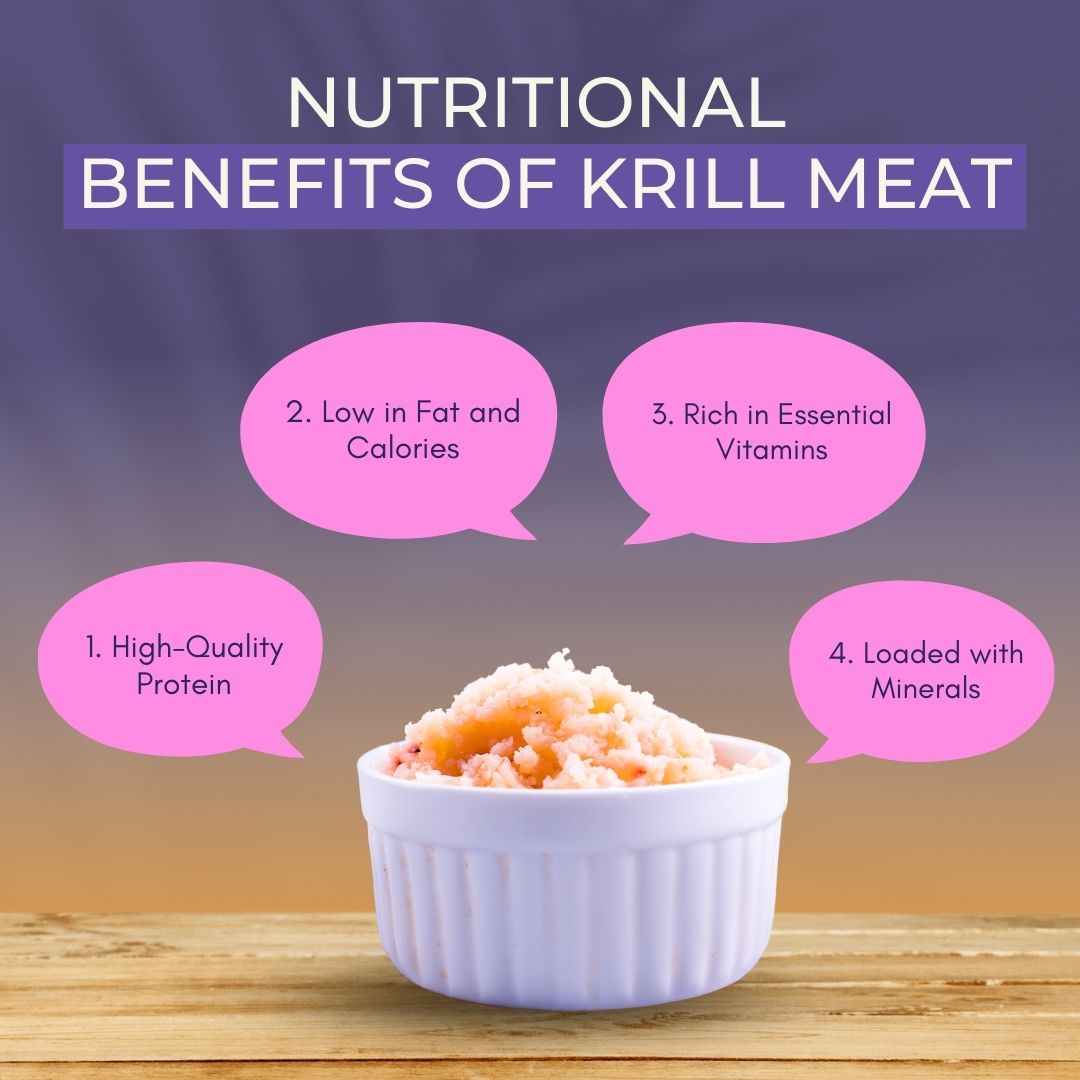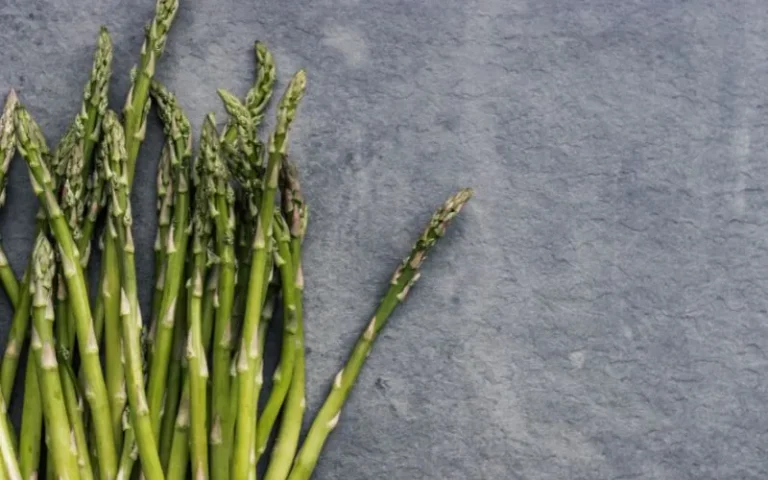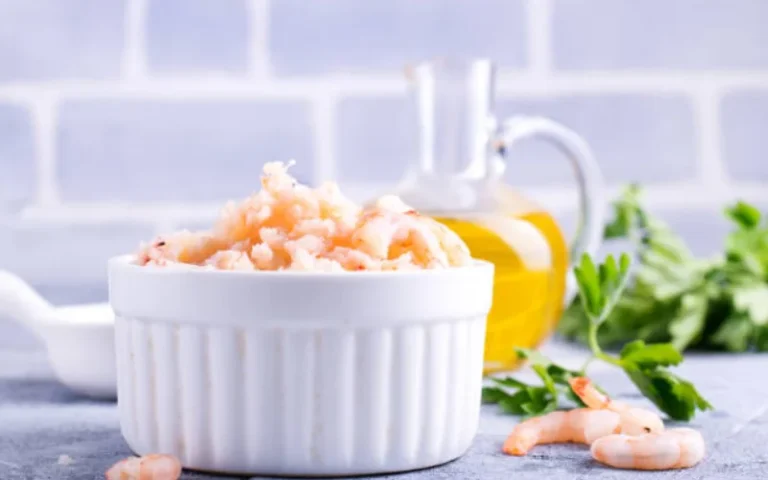Understanding the differences between krill and shrimp is important for a variety of reasons, from making informed dietary choices to recognizing their environmental impact. Whether you’re a seafood enthusiast, a consumer of krill oil supplements, or an advocate for marine conservation, knowing how these crustaceans differ can help you make better decisions.
Are Krill and Shrimp the same thing?
No, krill and shrimp are not the same thing. Krill are small, shrimp-like crustaceans belonging to the Euphausiacea order, while shrimp are classified under the Decapoda order. Let’s explore some key differences between krill and shrimp, highlighting what makes each unique in both the marine ecosystem and human use.
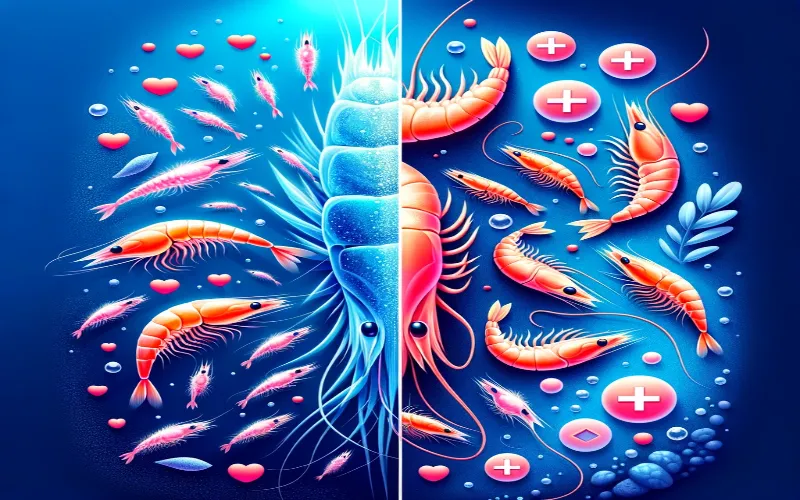
Size and Appearance
Krill are generally much smaller than shrimp, typically growing up to 2 inches, while shrimp can range from 1 to 12 inches, depending on the species. Krill are more delicate and translucent, often appearing almost invisible in the water, a survival mechanism that helps them avoid predators. Shrimp, on the other hand, have a more defined and colorful exoskeleton, with their segmented bodies and long antennae being more noticeable.
Additionally, krill have the fascinating ability to glow in the dark through a process called bioluminescence. This natural light production helps them communicate with each other and evade predators. Shrimp lack this ability, making krill truly unique in this respect.
Habitat and Distribution
Krill are primarily found in cold waters, especially in the Antarctic, where they form vast swarms that can stretch for miles. These swarms are critical to the survival of larger marine species like whales, seals, and penguins. Krill are essential to the marine food web, feeding on phytoplankton and in turn, nourishing some of the ocean’s largest creatures.
Shrimp, on the other hand, are far more adaptable in terms of habitat. They live in oceans, rivers, lakes, and even brackish waters, making them a global species. While shrimp do play a role in marine food chains, their ecological impact is more localized compared to krill, which support entire ecosystems.
Diet and Feeding Behavior
Krill are filter feeders, consuming microscopic algae known as phytoplankton. They use specialized appendages to filter their food from the water, which helps regulate the balance of nutrients in their ecosystem. By consuming phytoplankton, krill help manage carbon levels in the ocean, making them vital to marine health.
Shrimp are omnivorous scavengers, meaning they eat both plant and animal matter. Their diet includes algae, plankton, small fish, and even detritus. This makes shrimp opportunistic feeders that can adapt to various food sources depending on their environment, unlike krill, which are more selective.
Lifespan and Reproduction
Krill have a relatively short lifespan, typically living around 5 to 7 years. They reproduce by releasing eggs into the water, where they develop into larvae and eventually grow into adults. Krill swarms can contain billions of individuals, ensuring their species thrives despite being heavily preyed upon by larger marine animals.
Shrimp, in contrast, have a variable lifespan that ranges from 1 to 7 years, depending on the species. They reproduce by carrying fertilized eggs under their abdomens, which then hatch into larvae. While shrimp populations are more dispersed compared to krill swarms, their adaptability allows them to thrive in a wide range of environments.
Commercial Use
Krill and shrimp serve different purposes in human industries. Krill are mainly harvested for krill oil, which is rich in Omega-3 fatty acids and antioxidants like astaxanthin. Krill oil is widely used in health supplements due to its high bioavailability, making it easier for the body to absorb compared to other Omega-3 sources.
Shrimp, however, are one of the most popular seafood choices worldwide. They are harvested for direct human consumption and are used in a variety of cuisines. From shrimp cocktails to stir-fry, their versatility makes them a culinary favorite. While shrimp don’t offer the same Omega-3 content as krill, they are high in protein and provide essential nutrients like selenium and vitamin B12.
Environmental and Sustainability Issues
Krill harvesting is tightly regulated due to their vital role in marine ecosystems. Overharvesting can lead to food shortages for larger species like whales and penguins. As such, sustainable krill fishing practices are crucial to maintain ecological balance.
Shrimp farming, particularly in large-scale operations, has its own set of environmental concerns. It can lead to habitat destruction, especially in mangrove forests, and create issues with water pollution and bycatch (accidental capture of non-target species). Sustainable shrimp farming practices are being developed, but the environmental impact remains a challenge for the industry.
Nutritional Value
Krill are renowned for their high Omega-3 content, specifically in the form of EPA and DHA, which are essential for heart, brain, and joint health. They also contain astaxanthin, a powerful antioxidant that offers additional health benefits.
Shrimp, while lower in Omega-3, are a lean source of protein and contain important vitamins and minerals such as vitamin B12, selenium, and phosphorus. They are also low in calories and fat, making them a healthy option for those looking to increase their protein intake.
Mercury and Contaminants
Krill generally have lower levels of mercury and other toxins compared to larger seafood, making them a safer choice for regular consumption. Their small size and diet of phytoplankton keep them lower on the food chain, reducing the risk of contamination.
Shrimp, while also considered a low-mercury seafood, can sometimes contain traces of contaminants depending on where they are sourced. Wild-caught shrimp typically have lower toxin levels compared to farmed shrimp, which may be exposed to antibiotics or chemicals in some farming practices.
By understanding the key differences between krill and shrimp—ranging from their habitats and diets to their commercial use and environmental impact—you can make more informed decisions.
Nutritional Value Comparison of Krill and Shrimp
Krill and shrimp offer valuable nutrients, but their benefits differ, making each unique in its own right.
Nutritional value of Krill:
- Rich in Omega-3 fatty acids (EPA and DHA), supporting heart, brain, and joint health.
- Contains astaxanthin, a powerful antioxidant that helps protect cells from damage.
- Omega-3 in krill oil is more easily absorbed due to its phospholipid structure.
- Low in mercury and other contaminants, making it a safer choice for regular consumption.
Nutritional value of Shrimp:
- High in lean protein, providing essential nutrients like selenium, vitamin B12, and phosphorus.
- Low in fat and calories, ideal for those looking to increase protein intake.
- Contains beneficial vitamins and minerals, including iodine and zinc.
- Lower in Omega-3 compared to krill, but still offers health benefits as a versatile seafood option.
This bullet-point format helps highlight the nutritional differences between krill and shrimp in a clear and digestible way.

Popular Uses of Krill and Shrimp
Krill and shrimp, though similar in appearance, have distinct uses that cater to different markets. Their unique nutritional properties make them valuable in various industries, ranging from health supplements to culinary applications.
Krill Uses:
Krill Oil Supplements
Krill is primarily harvested for its oil, which is rich in Omega-3 fatty acids, specifically EPA and DHA, and astaxanthin, a potent antioxidant. These supplements are widely used to support heart health, reduce inflammation, and improve brain function. Krill oil has gained popularity due to its high bioavailability, meaning the body can absorb it more efficiently than traditional fish oil. It’s especially sought after by those looking for natural ways to boost their overall health.
Aquaculture and Animal Feed
In addition to human consumption, krill is used as a protein-rich feed for aquaculture species like fish and shrimp. It’s also used as pet food, especially in fish and bird diets, due to its high nutritional value. Krill meal, made from ground dried krill, is commonly incorporated into feeds to promote growth in farmed animals.
Bait in Fisheries
Krill are also used as bait in commercial fisheries, particularly in cold-water regions. Their natural abundance and nutritional richness make them an ideal bait for catching large fish species such as cod and mackerel.
Shrimp Uses:
Culinary Delicacy
Shrimp is one of the most popular seafood choices globally. It’s prized for its sweet, delicate flavor and versatility in cooking. Whether grilled, fried, boiled, or sautéed, shrimp is featured in countless dishes across various cuisines, from shrimp cocktails to stir-fries and pasta. Due to its high protein content and low-calorie count, shrimp is a favorite for those seeking a healthy but flavorful meal.
Frozen and Canned Shrimp
The seafood industry processes shrimp into various forms, including frozen, canned, and pre-cooked shrimp. This allows shrimp to be preserved for longer periods while maintaining its taste and nutritional value. It’s a staple in global markets due to its convenience and versatility.
Shrimp Farming (Aquaculture)
Shrimp farming, or aquaculture, has become a massive industry worldwide, especially in regions like Southeast Asia and Latin America. Farmed shrimp meet the high demand in markets where wild shrimp harvesting is either unsustainable or insufficient. However, sustainable farming practices are becoming a priority due to environmental concerns like habitat destruction and water pollution.
Chitin Production
Shrimp shells are used to extract chitin, a natural polymer found in the exoskeleton. Chitin is used in various industrial applications, including biodegradable plastics, water purification, and even medical treatments, where it’s used to make wound dressings and surgical threads.
Conclusion
Krill and shrimp may look similar at a glance, but they differ significantly in many ways. Krill belong to the Euphausiacea order, while shrimp are classified under Decapoda.
Krill are small, translucent creatures found in cold waters like the Antarctic, known for their high Omega-3 content and harvested primarily for supplements. Shrimp are larger, with a hard exoskeleton, thriving in diverse habitats from oceans to freshwater, and are mainly consumed as a protein-rich seafood.
If you’re looking for health supplements with Omega-3 benefits, krill oil is the ideal choice. However, if you’re after a delicious, protein-rich meal, shrimp is a fantastic option for a wide variety of dishes. The choice depends on your personal needs—whether it’s nutritional supplementation or a savory seafood dish.
FAQ
Do krill and shrimp taste the same
No, krill has a similar but milder flavor compared to shrimp. While both have a subtle sweetness, krill is slightly less briny and has a more delicate texture.
Are krill just baby shrimp?
No, krill are not baby shrimp. They are a separate species of small crustaceans, distinct from shrimp, though they share some similarities in appearance and habitat.
Should humans eat krill?
Yes, krill are safe for human consumption and are rich in omega-3 fatty acids, protein, and antioxidants. They are often consumed as krill oil supplements or in certain seafood dishes.
Is krill allergy the same as shrimp?
Krill allergy can be similar to shrimp allergy, as both are shellfish. If you are allergic to shrimp or other shellfish, it’s advisable to avoid krill to prevent allergic reactions.

